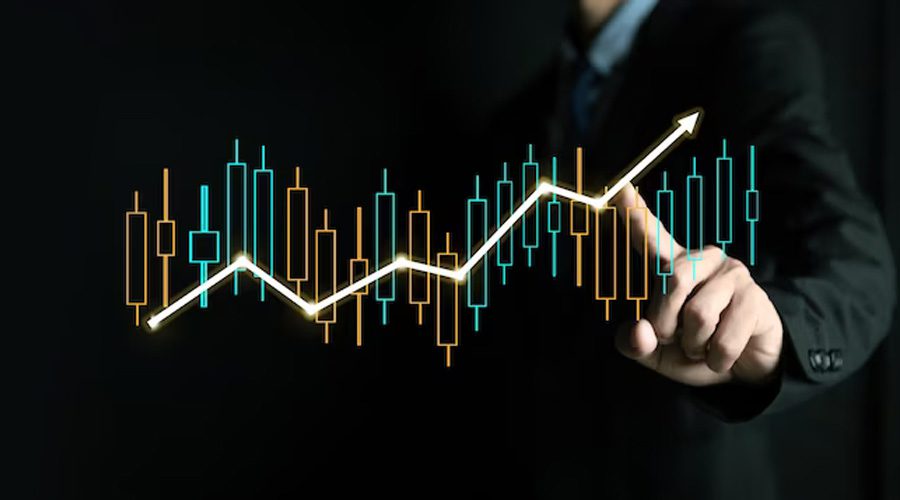Introduction
Futures trading is a popular method of investing that involves buying and selling contracts for the delivery of a specified commodity, financial instrument, or index at a predetermined price and date in the future. While futures trading can offer significant opportunities for profit, it also comes with substantial risks. This comprehensive guide aims to provide an in-depth Understanding the Risks of Futures Trading and offer strategies to manage and mitigate these risks effectively.
What Is Futures Trading?
Futures trading involves the purchase and sale of futures contracts, which are standardized agreements to buy or sell an asset at a future date for a predetermined price. These contracts are traded on futures exchanges and cover a wide range of assets, including commodities like oil, gold, and agricultural products, as well as financial instruments like currencies, interest rates, and stock indices.
Key Features of Futures Contracts
- Leverage: Futures contracts allow traders to control large positions with a relatively small amount of capital, known as margin. This leverage can amplify both gains and losses.
- Standardization: Contracts are standardized in terms of quantity, quality, and delivery time, making them easily tradable on futures exchanges.
- Expiration Date: Each contract has a specific expiration date, after which the contract must be settled.
Types of Risks in Futures Trading
- Market Risk:
- Price Volatility: Futures prices can be highly volatile due to factors such as supply and demand, geopolitical events, and economic indicators. This volatility can lead to significant losses if the market moves against your position.
- Gaps: Price gaps, which occur when prices jump from one level to another without trading in between, can lead to unexpected losses.
- Leverage Risk:
- Amplified Losses: While leverage can magnify profits, it can also amplify losses. A small adverse price movement can result in a substantial loss, potentially exceeding the initial investment.
- Margin Calls: If the market moves against your position, you may be required to deposit additional funds (margin call) to maintain your position. Failure to meet margin calls can result in the liquidation of your position at a loss.
- Liquidity Risk:
- Thin Markets: In less liquid markets, it may be difficult to enter or exit positions at desired prices, leading to slippage and potentially larger losses.
- Wide Spreads: Lower liquidity can also result in wider bid-ask spreads, increasing the cost of trading.
- Counterparty Risk:
- Exchange Default: Although futures exchanges have mechanisms in place to mitigate counterparty risk, there is still a small risk that the exchange or clearinghouse could default.
- Operational Risk:
- Technical Issues: Trading platforms may experience technical glitches, connectivity issues, or other operational problems that can disrupt trading and lead to losses.
- Order Errors: Mistakes in order placement, such as incorrect contract specifications or quantities, can result in unintended trades and losses.
- Regulatory Risk:
- Regulatory Changes: Changes in regulations or government policies can impact futures markets, leading to unexpected price movements and losses.
Strategies to Manage and Mitigate Risks
- Risk Assessment and Management:
- Risk Tolerance: Understand your risk tolerance and only trade with capital you can afford to lose.
- Diversification: Diversify your portfolio to spread risk across different assets and markets.
- Leverage Control:
- Use Leverage Wisely: Avoid using excessive leverage and ensure you have sufficient capital to cover potential losses.
- Margin Management: Monitor your margin levels closely and be prepared to meet margin calls promptly.
- Position Sizing:
- Small Positions: Trade smaller positions relative to your overall portfolio to minimize the impact of adverse price movements.
- Stop-Loss Orders: Use stop-loss orders to limit potential losses by automatically closing positions at predetermined price levels.
- Liquidity Considerations:
- Trade Liquid Markets: Focus on trading in highly liquid markets to ensure you can enter and exit positions easily.
- Avoid Thin Markets: Be cautious when trading in less liquid markets, as price movements can be more erratic.
- Technical and Fundamental Analysis:
- Technical Analysis: Use technical analysis to identify trends, support and resistance levels, and other key market indicators.
- Fundamental Analysis: Stay informed about economic indicators, geopolitical events, and other factors that can impact the markets you trade.
- Education and Experience:
- Continuous Learning: Continuously educate yourself about futures markets, trading strategies, and risk management techniques.
- Paper Trading: Practice trading with a simulated account to gain experience without risking real capital.
Conclusion
Futures trading offers the potential for substantial profits, but it also comes with significant risks. Understanding these risks and implementing effective risk management strategies is crucial for success in futures trading. By assessing your risk tolerance, using leverage wisely, diversifying your portfolio, and continuously educating yourself, you can navigate the complexities of futures trading and increase your chances of achieving long-term success.
Key Takeaways:
- Market Risk: Be aware of price volatility and the potential for gaps in the market.
- Leverage Risk: Use leverage carefully to avoid amplified losses and margin calls.
- Liquidity Risk: Trade in liquid markets to ensure ease of entry and exit.
- Counterparty Risk: Understand the mechanisms in place to mitigate counterparty risk.
- Operational Risk: Be prepared for technical issues and order errors.
- Regulatory Risk: Stay informed about regulatory changes that may impact the market.
- Risk Management: Implement strategies such as diversification, position sizing, and stop-loss orders to manage and mitigate risks effectively.
By taking a comprehensive and professional approach to understanding and managing the risks of futures trading, you can enhance your trading experience and work towards achieving your financial goals.












